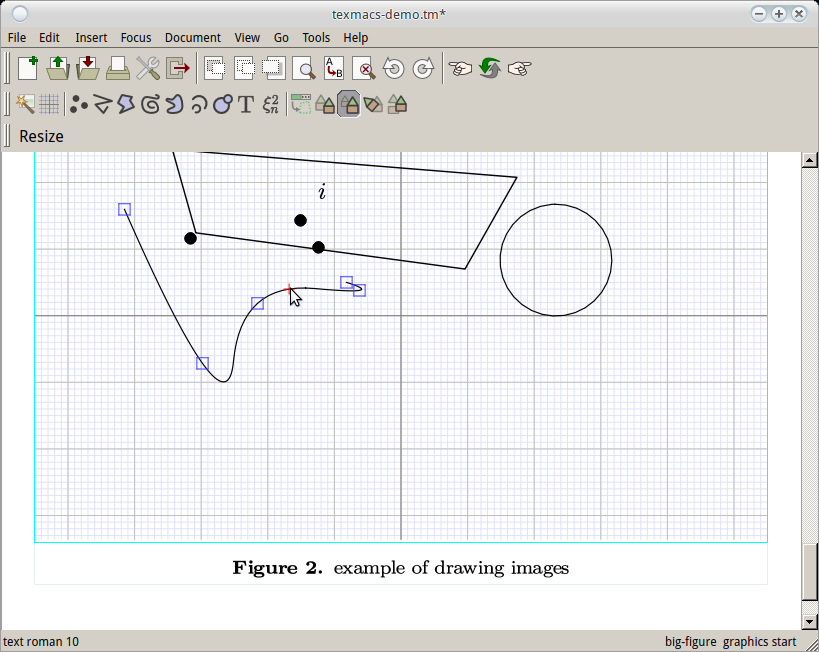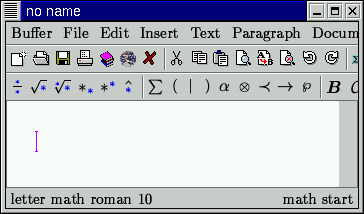

The typesetting primitives are designed to be very fast and are built-in into the editor the rendering of many of the primitives can be customized through the built-in environment variables the stylesheet language allows users to write new primitives as macros on top of the built-in primitives.

Evaluation of TeXmacs trees proceeds by reduction of the primitives, that is by evaluation of macro applications. The typesetting process converts TeXmacs trees into boxes. On disk, three representations of the TeXmacs format exist: a native representation, an XML representation and a representation with Scheme S-expressions the Scheme representation is useful for the interfacing with Scheme programs. In the on-screen representation of the TeXmacs tree, the cursor movement represents the movement inside the tree. TeXmacs trees are represented in TeXmacs files as strings, and in the TeXmacs editor as the typeset representation of the document together with its interactive behaviour. (written here with the TeX markup used by Wikipedia) and is turned by TeXmacs' own typesetting engine into a typeset formula, here inserted as an image: TeXmacs facilitates the inputting of mathematical formulas by mapping sequences of keyboard presses to symbols.

In the editor it is possible to switch between text mode and source mode editing, and support for the composition of macros is present the source editor is syntax-aware. A detailed description of the structure in the proximity of the cursor is provided in the footer of the editor window, finely selectable with left-right arrow presses. In the TeXmacs editor structure and appearance of the document are represented at the same time the structure is made evident to the user by surrounding logical units of the document in nested focus frames carrying color cues that are displayed according to the movement of the cursor. Along with the Cygwin version, a native port is available for Microsoft Windows. TeXmacs currently runs on most Unix-based architectures including Linux, FreeBSD, Cygwin, Haiku and macOS. An implementation of spreadsheets is present starting from version 1.99.12 spreadsheets in TeXmacs can take advantage of plugins (for example Python or Maxima) to compute cell values. It also features a presentation mode and a small technical drawing editor and there are plans to evolve towards a complete scientific office suite with spreadsheet capabilities. TeXmacs also supports a Scheme extension language called Guile for customizing the program and writing extensions. It can be used as a front-end to a number of computer algebra systems such as Maxima, FriCAS and SageMath, and can in turn integrate some of their output into its typesetting. TeXmacs can handle mathematical formulas, tables, images, cross-references and citations.
#Texmacs fonts pdf
There is a converter for MathML as well, and TeXmacs can output PDF and PostScript for printing. LaTeX also can be imported (to some extent), and both import from and export to HTML, Scheme, Verbatim, and XML is provided the HTML export is stylable with CSS (since version 1.99.14). TeXmacs is not a front-end to LaTeX but TeXmacs documents can be converted to either TeX or LaTeX. The goal of TeXmacs is to provide a WYSIWYG editor that nevertheless makes it possible to write correctly structured documents with aesthetically pleasing typesetting results. Like in many WYSIWYG editors (such as Microsoft Word), authors manipulate a document on screen which should print to a similar-looking paper copy. A cyan focus frame surrounds the innermost environment (a formula environment) the cursor is in, while the subtle gray box surrounds another active tag (the theorem environment). On another side of the editing and document preparation world, a program for visual interaction with structured texts written in LaTeX is LyX, which does not aim at WYSIWYG editing but at visual representation of the structure ( WYSIWYM).Ī screenshot showing mathematical formulas and italic font. In the 2000s and 2010s, interest on interactive editing of structured text encouraged the development of programs intended for scholars in the humanities an example of this is CWRC-Writer, a visual XML editor with "Close-to-WYSIWYG editing and enrichment of scholarly texts with meaningful visual representations of markup". 1 An outline of interactive editing of structured text (1980s-2020s)Īn outline of interactive editing of structured text (1980s-2020s) Īs a structured WYSIWYG editor and document preparation system, TeXmacs is similar to earlier structured document editors, such as Interleaf (first release 1985), Framemaker (1986), SoftQuad Author/Editor (1988), Lilac, Grif (1991), and Thot there was also academic research into interactive editing of complex typographical constructs represented logically.


 0 kommentar(er)
0 kommentar(er)
